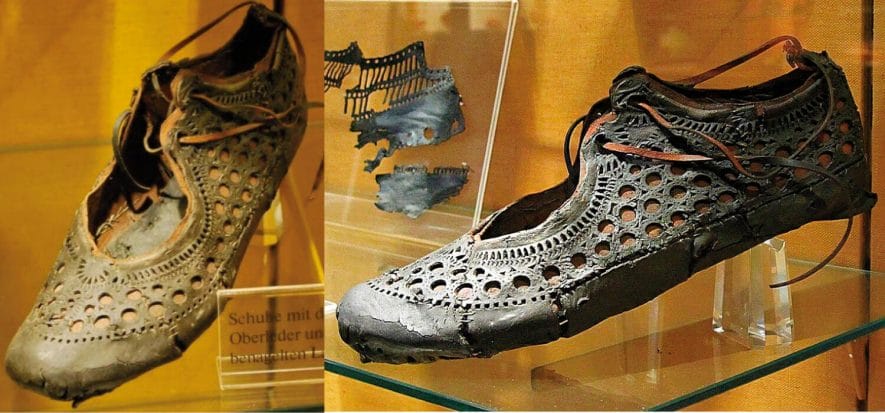If you happen to go and visit the Saalburg museum, in Germany, you will be able to admire the footwear sample for women, on display in the picture. It is no coincidence, by the way, that such shoe model is exhibited in the German museum. In fact, in that area one can enjoy a Roman fort, built around 90 A.D., which has been UNESCO heritage since 2005. The small shoe, which was discovered inside a well, in the fort, is made of leather: considering that it is nearly 2,000 years old, its state of conservation is fantastic. Apart from the umpteenth evidence about durability of leather, of which the shoe is made, archaeologists and custom experts were flabbergasted about the making of the shoe: cutting-edge, its upper pattern hangs on an elegant and geometrical perforation, which proves to be a sign, point out experts, “of the particularly wealthy conditions of the lady who owned the shoe”. After having been investigated for some years, the 2k-year-old Saalburg shoe is back to current events thanks to its advertising in some web portals mostly dedicated to history and habits of the Roman Empire. As reported by one of them (namely, Romans across Europe), “nowadays, taking into consideration how appreciated Italian modern leather is, it is no surprise that in the ancient days in Rome they used to wear such a broad variety of leather sandals and shoes”. In fact, in the old days social class individuals belonged to could be spotted from shoes one was wearing. In example given, “calceus” was an ankle boot, for men and women, which wealthy Romans used to wear. Models for women used to be full of colours, while shoes for men were generally softer. Senators used to wear black footwear models, whereas red shoes were a symbol of the three most important offices when Rome was a republic. “Caligae”, which looked like sandals, were worn by soldiers, who were supposed to carry out long marches and therefore needed comfortable shoes, suitable for feet. Common people used to wear “perones”, made of a simple flat sole and a leather upper-shoe to cover foot: they fastened it to feet by using laces or buckles tied around ankles. On top of that, actors used to wear other shoes, which were different according to their theatre performance (comedy or tragedy). Ultimately, they also wore “crepidulae”: their sole was made of thick leather, while their upper-shoe was adorned with precious ornaments.
Nice leather shoe for women, isn’t it? You can find it in Germany, and it is (nearly) 2,000 years old










